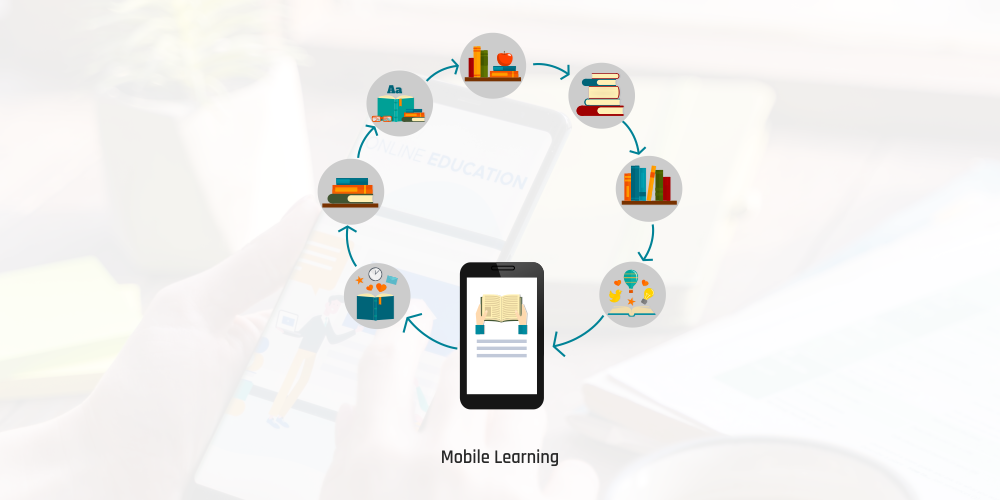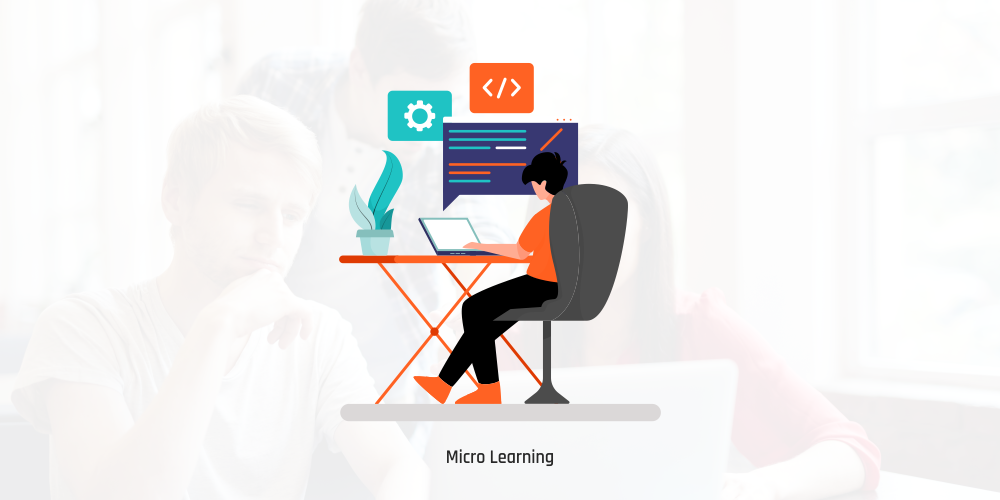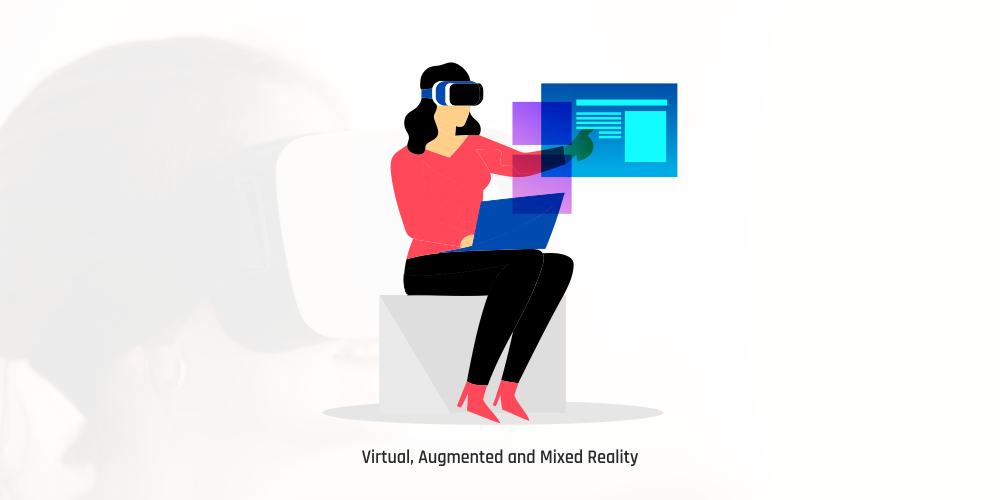Top E-learning Trends to Watch for in 2020

The term ‘E-learning’ has been around since 1999 when it was first coined and used at a Cognitive-Behavioral Therapy (CBT) systems seminar in the United States. Since then, the role of the teacher or instructor as it has been traditionally defined, is on the brink of becoming an anachronism.
New and emerging pedagogical approaches have utilized the power of communication and information technologies, ushering dramatic changes in the educational landscape, altering the depth, breadth, and opportunities for learning.
Anyone who has been associated with E-learning over the past decade would have noticed the pace of change that it has undergone, particularly over the past five years. From advancements made in instructional methodologies to the integration of richer content in E-learning modules, the industry has evolved at a prodigious pace.
In this post we’ll take a look at the top E-learning trends to consider this year. They have different ways to enhance the experience of learners so they are kept motivated. Whether you intend to teach students or train employees, these methodologies will further their educational development.
Mobile Learning
A study conducted last year claimed that by 2025, nearly three quarters (72.6%) of internet users will solely access the web via their smartphones. That’s equivalent to 3.7 billion people worldwide. This widespread mobile usage extends to consuming learning and training content on other mobile devices as well.
In order to meet the needs of mobile learners, it’s important that courses are specifically designed with them in mind. The courses should be responsive and can be published to multiple platforms so learners have meaningful and rewarding experiences, regardless of the device they choose to use.
Loved by businesses and Learning and Development (L&D) teams as well, mobile learning will continue to dominate online training delivery and supplement Instructor-Led Training (ILT). It’s a ‘must-have’ and will continue to see increased adoption this year.
Microlearning
 From videos to infographics to podcasts to blogs like this post, microlearning is another trend that ruled the past decade and will continue well into the coming years. It presents “bite-sized chunks” of information in brief modules and allows learners to review at any time. Retention is therefore better and learners are less conscientious about going through a long and boring module.
From videos to infographics to podcasts to blogs like this post, microlearning is another trend that ruled the past decade and will continue well into the coming years. It presents “bite-sized chunks” of information in brief modules and allows learners to review at any time. Retention is therefore better and learners are less conscientious about going through a long and boring module.
This technique meets learners’ needs because it offers ‘just in time’ content whether they are on the go or simply need a specific piece of information. The easy to consume bits of data can be quickly disseminated within organizations, helping learners meet specific objectives on their learning paths.
Microlearning is also widely regarded as an ideal teaching method for institutions with a limited amount of time for training. The brief modules can provide important information without becoming a distraction. It’s cost and time efficient, more comprehensible to learners, and can be used on any device in any location.
Social Learning
 The use of social media is another trend that has defined the past decade or so. Last year, Facebook had 2.5 billion monthly active users. It’s no surprise that this trend also had a significant impact on learning. By definition, social learning involves collaboration among individuals through various mediums like forums, chat sessions, and learning circles.
The use of social media is another trend that has defined the past decade or so. Last year, Facebook had 2.5 billion monthly active users. It’s no surprise that this trend also had a significant impact on learning. By definition, social learning involves collaboration among individuals through various mediums like forums, chat sessions, and learning circles.
Innovative institutions are channeling their learners’ desires to be social and are even encouraging them to post and converse about their learning journeys. Social learning prods students and employees to learn from one another. It does not restrict learning to the confines of a classroom or a management system.
As more collaborative tools are devised and developed, social learning will continue to leave a huge impact in 2020 and beyond. This trend underpins the concept of continuous learning and opens avenues to learning opportunities anytime and anywhere.
Virtual, Augmented, and Mixed Reality
 Augmented Reality (AR) and Virtual Reality (VR) are both growing fast as crucial means of implementing learning content. In fact, the K-12 basic education curriculum has rapidly adopted AR to teach various subjects, including Science and Math.
Augmented Reality (AR) and Virtual Reality (VR) are both growing fast as crucial means of implementing learning content. In fact, the K-12 basic education curriculum has rapidly adopted AR to teach various subjects, including Science and Math.
The remarkable thing about AR is that it can supplement the existing content through compelling overlays of images and graphics that can thrill the learners. But more than the thrill, it’s the actual experience that helps learners to connect better to the content presented.
As for VR, it continues to see substantial growth as it is used in teaching different safety-related protocols. Organizations are now considering VR as an important solution, as E-learning firms utilize effective Instructional Design techniques to further enhance the experience. Using a combination of 360° images, interactions, and other elements, VR is increasingly becoming a productive experience.
Added to Augmented Reality and Virtual Reality is the exciting new-wave technology called Mixed Reality (MR). It first appeared in 1994 so it’s really just a millennial. Nonetheless, big players are already making huge investments in MR which merges AR and VR to an exceptional effect.
Although a number of institutions have already began using these technologies to deliver immersive training, we can expect to see more of it in E-learning. Note that while some individuals prefer textual content, majority are visual learners who prefer getting involved in training to acquire new knowledge. A good way to cater to the needs of these type of learners is through reality technologies.
They are effective in helping instructors deliver immersive learning experiences, thereby improving learners’ retention ability. In addition, reality technologies are important tools that help institutions in reducing certain risks associated with training. By far the best known use cases for MR involve the medical and manufacturing industries.
Gamification
 This trend involves the use of game mechanics to raise learning engagement and retention rates. It is all about using the concepts and key principles of gaming to achieve the learning objectives. Although it defies modern learning techniques, gamification has proven to be a very effective tool and has contributed a lot to the popularity of E-Learning. Games that are well conceived and strategically designed engage learners effectively. A number of implementations has proven that games help in stimulating the release of “feel good” hormones, like dopamine and serotonin.
This trend involves the use of game mechanics to raise learning engagement and retention rates. It is all about using the concepts and key principles of gaming to achieve the learning objectives. Although it defies modern learning techniques, gamification has proven to be a very effective tool and has contributed a lot to the popularity of E-Learning. Games that are well conceived and strategically designed engage learners effectively. A number of implementations has proven that games help in stimulating the release of “feel good” hormones, like dopamine and serotonin.
A notable benefit of gamification is that it enables businesses and organizations to create incentives that typically lead to successful training results. For instance, an online course can be crafted to reward learners with badges or points when they complete modules. While such modules are meant to simplify learning, they make the content more appealing to learners. Educators and corporate instructors can use gamification to foster an intensive and emotional learning experience.
Personalized Learning
 This refers to a wide range of educational programs, instructional approaches, learning experiences, and academic-support techniques that are meant to address the specific learning needs, aspirations or interests of individual students.
This refers to a wide range of educational programs, instructional approaches, learning experiences, and academic-support techniques that are meant to address the specific learning needs, aspirations or interests of individual students.
Each student receives a learning plan that’s based on what he already knows, how he wants to learn, and at the pace that works best for him. Most people perceive personalized learning as an alternative to the “one-size-fits-all” approaches wherein teachers provide all students the same type of instruction, the same tests, and the same evaluation methods with little variation from student to student.
Personalized learning is sometimes called “student-centered learning” because the general objective is to make individual learning needs the main consideration in key educational decisions instead of what could be preferred, what’s more convenient or what’s logistically easier for teachers.
As for businesses, personalized learning allows L&D teams to align their goals with learners and reskill or upskill them far more effectively than generic training. You can use it for employee training needs at different levels: to practice and hone skills to manage the job better, for skills to grow in the company, or for Just-in-Time learning aids within the workflow of learners.
Artificial Intelligence
 While this has been the talk of the town for quite some time, we are now seeing its practical value. It is being used to offer highly customized learning pathways for learners. Instructors are now relying on chat bots to help in directing their learners through modules. This is particularly true for organizations with globally dispersed learners. Related to this is the use of robots that help children and people with special needs in learning new skills.
While this has been the talk of the town for quite some time, we are now seeing its practical value. It is being used to offer highly customized learning pathways for learners. Instructors are now relying on chat bots to help in directing their learners through modules. This is particularly true for organizations with globally dispersed learners. Related to this is the use of robots that help children and people with special needs in learning new skills.
Distinct advantages of using artificial intelligence include improved accessibility, real-time questioning, generation of fresh content, natural language processing, personalization of the learning experience, and facilitating the creation of customized training path through data analysis.
Additionally, artificial intelligence has been recognized as a new trend in E-learning because of its innate ability to translate learning modules a lot faster than the conventional translation techniques. It is also affordable, effective, and can help you collate relevant information to improve your training development.
Curation and User-Generated Content
 Learners often rely on external sources like YouTube for informational videos, and many institutions are now integrating publicly available external resources to their own content so they can offer modules that are rich in sources, formats, and perspectives. But while the Internet provides instant access to information, there’s still a need to review the plethora of data to identify what learners really need.
Learners often rely on external sources like YouTube for informational videos, and many institutions are now integrating publicly available external resources to their own content so they can offer modules that are rich in sources, formats, and perspectives. But while the Internet provides instant access to information, there’s still a need to review the plethora of data to identify what learners really need.
Content curation is an excellent way to offset this issue and offer on-demand and relevant content. You can curate content from the public domain or from your existing knowledge base. This can be used to keep costs down and support formal training. It’s also a great way to promote informal learning as well as self-directed learning in the workplace. Lastly, content curation can facilitate user contribution (User-Generated Content) so the knowledge base is kept current and relevant.
Blended Learning

The concept of blended learning is that some students can benefit from the combination of online learning and face-to-face instruction. These students are supposed to transition seamlessly from in-person learning to learning in a digital environment and back again. This approach has seen significant advancements over time, largely fueled by the growing interest in utilizing digital learning tools and the increasing accessibility to technology.
The benefits of blended learning include the fact that students learn best independently, on their own pace, and through interaction with digital technology. Concurrently, learning done online is often best complemented by in-person interactions. For many companies and organizations, blended learning reduces expenses because it cuts training costs. This is achieved through less facilitator fees, cheaper venue rentals, and lower travel and accommodation expenses associated with training.
A number of educational advocates have actually touted the advantages of blended learning such as student-centered mode of instruction, easy data collection, better engagement, and increased retention. However, just like any educational model, blended learning must be used sensibly, with emphasis on enriching student learning experience.
Parting Words…
The E-learning market is growing fast and projected to reach $398 billion by 2026. This means that if you want to remain competitive, you must adjust to new trends in order to improve your training. The E-learning trends discussed above are what you can expect to prevail as they will allow you to deliver instruction and training that comply with today’s digital world. Let us know what you think and what your predictions are for the top E-learning trends in 2020 by leaving a comment below.

